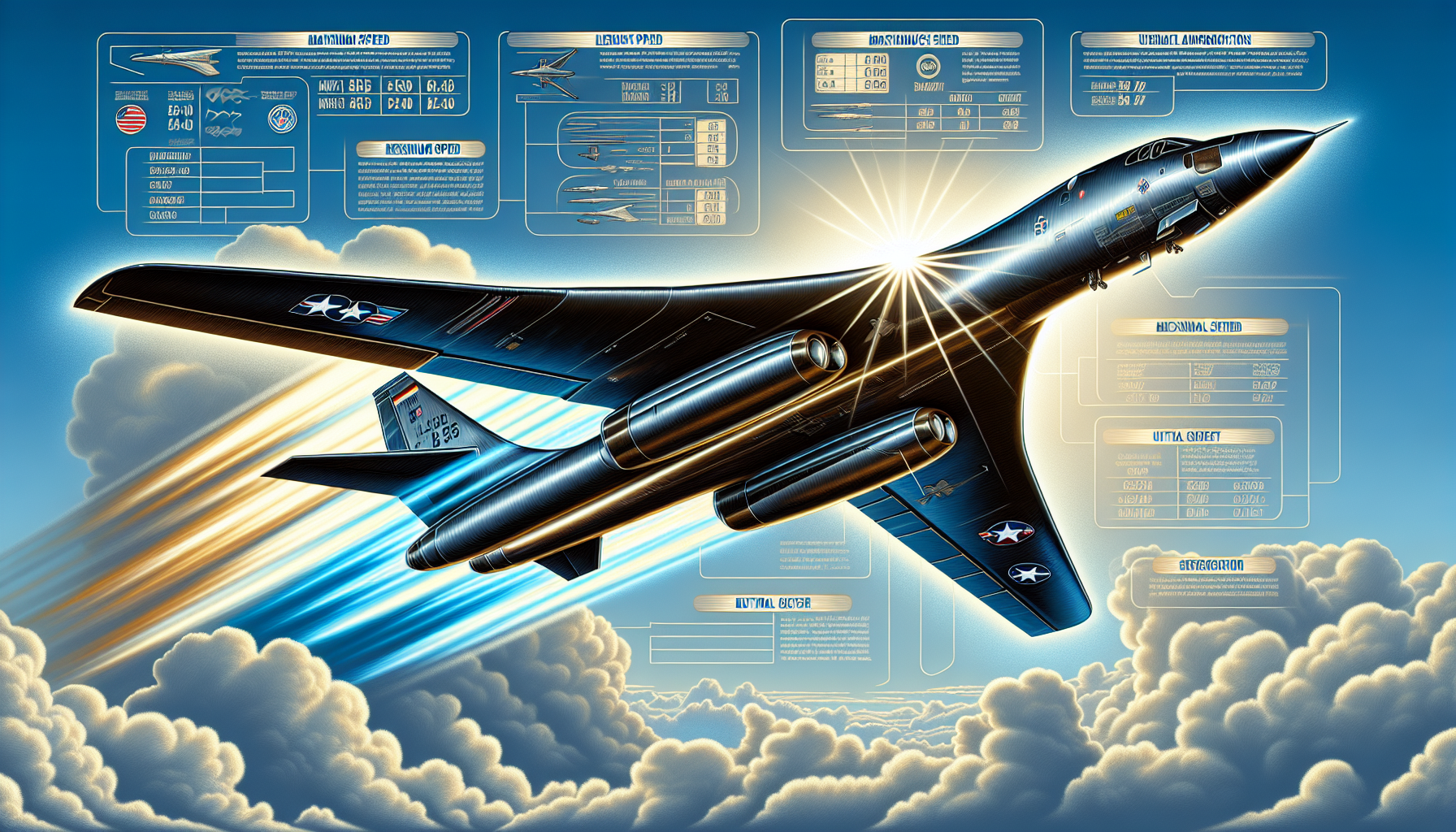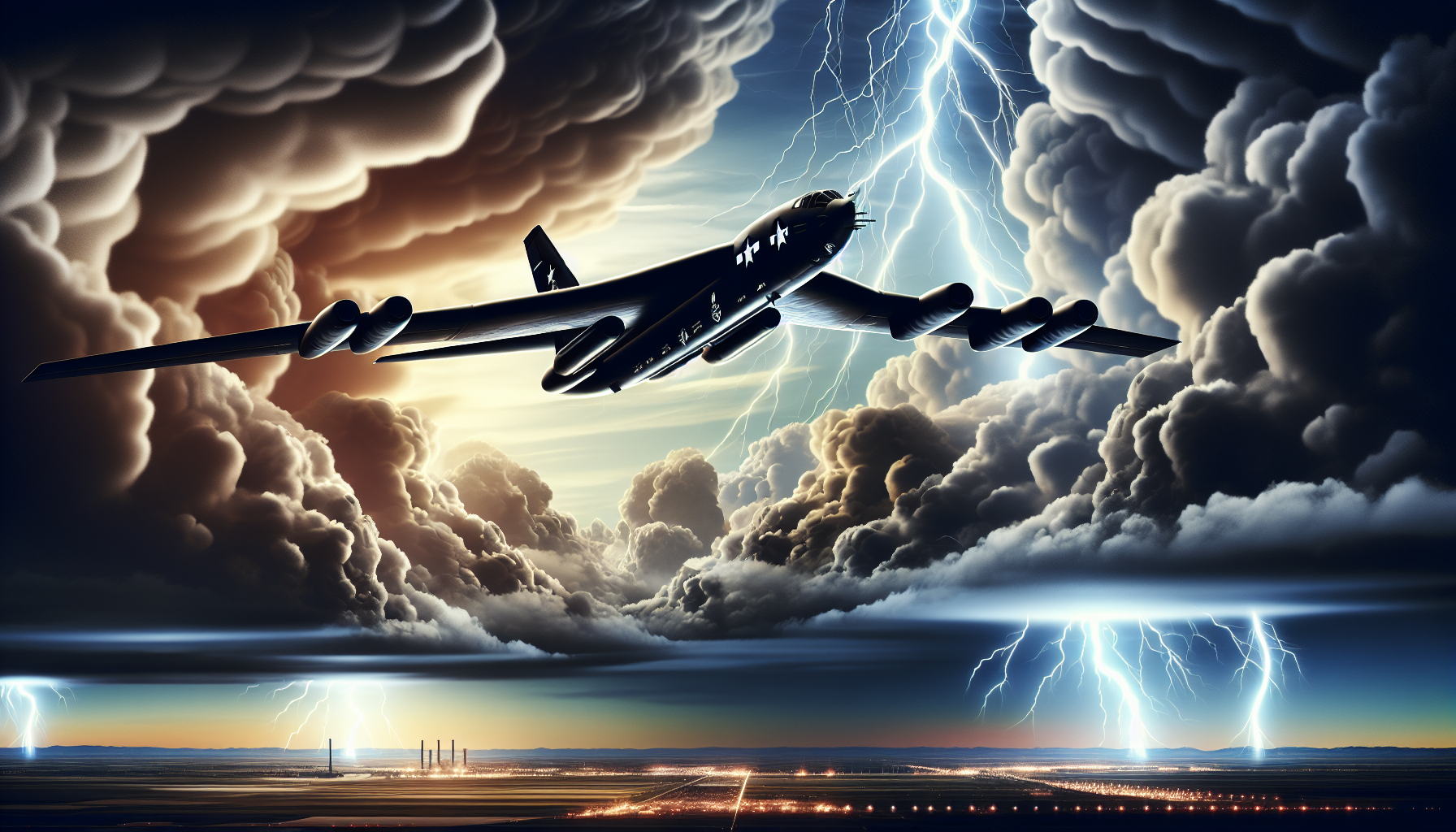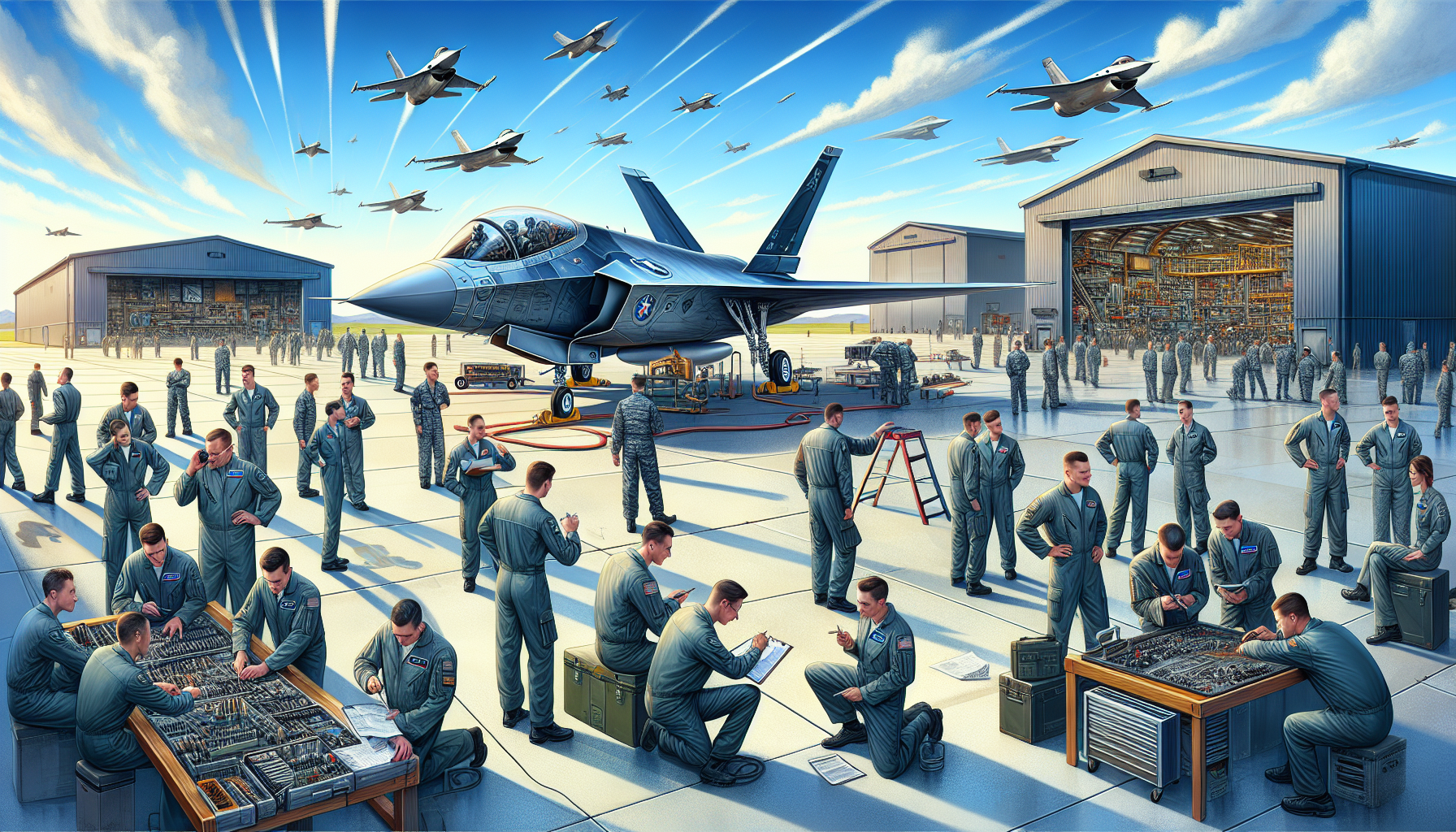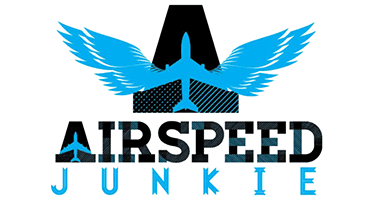B1B Bomber: Powerhouse of the Skies
The B1B Bomber, also known as the B-1B Lancer, is a key asset in the US Air Force’s arsenal. Known for its supersonic speed and advanced systems, it has evolved from its predecessor to become a versatile and powerful bomber. In this article, we will explore its development, capabilities, notable missions, and strategic importance.
Key Takeaways
-
The B1B Bomber evolved from the B-1A program in the 1970s, resulting in its operational debut in 1986, establishing its importance in the U.S. Air Force’s strategic capabilities.
-
Equipped with advanced technology, including a maximum speed of Mach 1.2, substantial fuel capacity, and precision targeting systems, the B1B Bomber excels in high-altitude, long-range bombing missions.
-
With a significant operational history, the B1B has successfully engaged in various military campaigns, transitioning from nuclear to conventional roles, and showcasing its adaptability and effectiveness in modern warfare.
Evolution and Development
The story of the B1B Bomber begins in the 1970s with the development of the B-1A, envisioned as a successor to the aging B-52 Stratofortress. However, the B-1A program faced numerous challenges and was halted in 1977 due to cost concerns and strategic shifts. The project was revived in 1981, leading to the creation of the B-1B variant, which incorporated significant improvements over its predecessor. The first production model of the B-1B took flight in October 1984, marking a new era in strategic bombing capabilities.
By May 1988, 100 B-1B aircraft had been completed, and the fleet became operational on October 1, 1986. The B-1B’s evolution reflects intense innovation and adaptation, establishing its role as a vital asset in the United States Air Force.
Technical Specifications and Capabilities

The B-1B Lancer is renowned for its impressive technical specifications and capabilities, which make it a formidable force in modern aerial combat. One of its most notable features is its ability to achieve speeds exceeding 900 mph, with a maximum speed of Mach 1.2 at sea level. This supersonic flight capability, combined with specific wing sweep settings, allows the B-1B to optimize its performance during combat scenarios.
With a fuel capacity of approximately 265,274 pounds, the B-1B can conduct long-range missions without frequent air refueling. This substantial fuel capacity supports its role in delivering payloads over vast distances. Additionally, the aircraft’s reduced radar cross-section enhances its survivability, allowing it to evade enemy detection and operate effectively in hostile environments.
With a ceiling of over 30,000 feet, the B-1B performs high-altitude operations with ease. This high-altitude capability, combined with its advanced radar and targeting systems, ensures that the B-1B can engage and destroy targets with precision. The aircraft’s ultra high resolution capability further enhances its effectiveness in identifying and striking critical enemy assets.
Another key aspect is its fully integrated data link, providing real-time communication and situational awareness during missions. This system enables the crew to receive and process targeting data rapidly, facilitating timely and accurate strikes on emerging threats. Additionally, the B-1B’s avionics and communication systems have undergone numerous upgrades to ensure that it remains a cutting-edge platform in modern warfare.
The B-1B Lancer’s technical specifications underscore its role as a powerful and versatile strategic bomber, capable of executing a wide range of missions with exceptional precision and efficiency.
Operational History
The B-1B Bomber’s operational history testifies to its versatility and strategic value in numerous military campaigns. Since its introduction, the B-1B has been deployed in numerous conflicts, demonstrating its adaptability and effectiveness in diverse combat scenarios. Its first combat mission took place in December 1998 during Operation Desert Fox, marking a significant milestone in its transition from a nuclear to a conventional bombing role.
The following subsections will delve into the B-1B’s contributions to specific operations, including Operation Desert Fox, Operation Allied Force, and Operation Enduring Freedom.
Operation Desert Fox
During Operation Desert Fox, the B1B Bomber played a pivotal role in degrading Iraq’s weapons of mass destruction capabilities. This campaign, conducted in December 1998, saw the B1B conducting multiple bombing missions targeting key Iraqi military installations.
The B1B’s ability to deploy various precision-guided munitions made it invaluable for the United States Air Force, allowing accurate strikes with minimal collateral damage. The B1B’s use of conventional weapons during Operation Desert Fox underscored its effectiveness in modern warfare.
Operation Allied Force
Operation Allied Force in 1999 further showcased the B1B’s adaptability and combat effectiveness. During this operation, the B1B worked alongside coalition air forces, delivering a range of munitions and participating in diverse missions. The B1B’s versatility and advanced targeting systems enhanced the effectiveness of coalition operations, showcasing its ability to integrate seamlessly into mixed force packages.
The B1B’s role in Operation Allied Force highlighted its critical contribution to achieving mission objectives.
Operation Enduring Freedom
Operation Enduring Freedom tested the B1B Bomber’s rapid strike capabilities. Designed for quick engagement of time-sensitive targets, the B1B proved to be a vital asset in conventional combat operations. Capable of delivering the largest conventional payload, the B1B struck targets with precision anywhere in the world, making it an essential tool in modern warfare.
With advanced targeting systems, the B1B swiftly engaged and strike emerging targets rapidly, enhancing coalition forces’ effectiveness during the operation, thanks to its excellent radar targeting system, which can rapidly deliver massive quantities of precision strikes.
Advanced Systems and Upgrades

The B1B Bomber has undergone numerous advanced systems and upgrades to maintain its operational superiority in the fast-paced integrated battlefield. One of the most significant upgrades is the Integrated Battle Station (IBS) modification, which enhances the aircraft’s avionics and communication systems. These enhancements boost the B1B’s mission performance, ensuring it remains a vital asset for the U.S. Air Force.
We will explore specific upgrades, including the Fully Integrated Data Link, Central Integrated Test System, and Cockpit Upgrades.
Fully Integrated Data Link
The Fully Integrated Data Link (FIDL) on the B-1B Lancer enhances battlefield situational awareness and secure communication beyond the line of sight. With Link-16 capability, FIDL allows the B-1B crew to quickly receive targeting data from command and control centers, enabling timely strikes on emerging targets.
This integration enhances the B-1B’s operational flexibility in fast-paced combat environments, making it a more effective platform in modern warfare.
Central Integrated Test System
The Central Integrated Test System (CITS) ensures the functionality and reliability of the B-1B’s electronic systems. By continuously monitoring and testing the aircraft’s electronic components, CITS enhances the B-1B’s operational readiness.
This system is vital for maintaining the aircraft’s performance and ensuring mission success in various operational scenarios.
Cockpit Upgrades
Recent cockpit upgrades on the B-1B Bomber have improved pilot situational awareness and operational efficiency. These upgrades include the introduction of color displays and advanced navigation systems, which enhance the aircrew’s ability to execute missions effectively.
The Integrated Battle Station modification has further improved situational awareness by introducing new displays and control equipment, reducing workload and enhancing mission execution. Overall, these cockpit upgrades have made the B-1B a more capable and efficient platform.
Strategic Importance

The B1B Bomber’s strategic importance in modern warfare is undeniable. Since its first combat operation in December 1998 during Operation Desert Fox, the B1B has proven its value in various significant missions. As a strategic bomber, the B1B carries the heaviest payload of guided and unguided weapons in the Air Force’s arsenal.
We will explore the B1B’s role in nuclear missions, conventional warfare, and mixed force packages.
Nuclear Mission
Initially designed to carry nuclear weapons, the B1B Bomber played a vital role in the United States’ strategic nuclear arsenal. As part of the nuclear triad, the B1B contributed to deterrence by providing rapid response capabilities against nuclear threats.
However, its nuclear mission was officially eliminated in 1994, transitioning to a purely conventional role by 2011.
Conventional Warfare
The B1B’s transition from a nuclear to a conventional role demonstrates its adaptability in strategic roles. Despite losing its nuclear capabilities in 1994, the B1B has shown its effectiveness in conventional warfare through various operations, including Operation Allied Force and Operation Enduring Freedom.
During Operation Allied Force, six B1B bombers dropped over 20% of the total ordnance despite flying less than 2% of the combat sorties. In Operation Enduring Freedom, B1Bs accounted for nearly 40% of the total tonnage dropped by coalition aircraft in the first six months.
Mixed Force Packages
The B1B integrates well into mixed force packages, enhancing joint operations with its long loiter time, substantial payload, and advanced radar targeting systems. Its payload and radar targeting systems enhance its effectiveness in joint operations with other military forces, making it a versatile multi mission weapon system.
The B1B’s capabilities enable it to participate effectively in joint strike missions, complementing other air and ground forces.
Training and Maintenance

Training and maintenance are vital for ensuring the B1B Bomber’s operational readiness. B1B crews undergo comprehensive training programs, including ground school, simulation, and flight exercises, to prepare for various operational scenarios. Additionally, B1B technicians receive extensive initial training for maintenance duties, ensuring the aircraft’s reliability and performance.
We will explore specific aspects of training and maintenance, including Weapon Systems Officers, Ground-Based Navigation Aids, and Aircraft Reliability.
Weapon Systems Officers
Weapon Systems Officers (WSOs) receive specialized training to operate and manage the B1B’s advanced weaponry and targeting systems. This training focuses on targeting, weapon delivery, and avionics integration, ensuring WSOs can effectively perform their critical operational roles during missions.
Ground-Based Navigation Aids
Ground-based navigation aids enhance the accuracy and effectiveness of B1B missions. These aids provide critical guidance to flight crews, working with onboard navigation systems to ensure precise targeting and mission execution.
Aircraft Reliability
Maintaining the B1B Bomber’s reliability involves continuous improvements in maintenance practices and regular system upgrades. The central integrated test system on the B1B monitors over 9,000 aircraft parameters, aiding in maintenance and operational readiness.
These efforts ensure the B1B remains a reliable and effective platform in modern warfare.
Accidents and Incidents
The B1B Bomber has experienced accidents and incidents during its operational history. A notable incident occurred on January 4 at Ellsworth Air Force Base, where a B-1B bomber crashed during a landing attempt in low visibility conditions, resulting in the complete loss of the aircraft valued at $450 million.
Fortunately, all four crew members ejected, although two required medical treatment for injuries sustained during the ejection. Such incidents underscore the importance of rigorous safety protocols and continuous improvements in operational procedures to mitigate risks.
Display and Recognition

The B1B Lancer is displayed in various locations across the United States, including museums and air force bases. This aircraft, celebrated for its innovative design and operational capabilities, can be seen at the National Museum of the United States Air Force and the Strategic Air Command & Aerospace Museum, among others. These exhibits provide the public with an opportunity to appreciate the B1B’s significant contributions to military aviation.
We will highlight specific recognitions and memorable flights associated with the B1B Lancer.
National Aeronautic Association Recognized
The B1B Bomber has received several prestigious awards from the National Aeronautic Association, acknowledging its excellence in supersonic flight capabilities and operational effectiveness. These recognitions underscore the B1B’s significant contributions to the United States Air Force and its strategic importance in modern warfare.
Recognition by the National Aeronautic Association highlights the B1B Bomber’s role in advancing aerospace technology and military aviation excellence.
Memorable Record Flights
The B1B Lancer has been recognized for achieving notable record flights, earning accolades from the National Aeronautic Association. One of the most memorable record flights occurred in 1994, for which the B1B was honored as one of the top ten memorable flights.
These achievements highlight the B1B’s capabilities in supersonic flight and its role in pushing the boundaries of military aviation.
Summary
In conclusion, the B1B Bomber has cemented its legacy as a powerhouse of the skies, evolving from its initial design as a nuclear deterrent to becoming a versatile and formidable strategic bomber. With its impressive technical specifications, extensive operational history, and continuous upgrades, the B1B remains a critical asset for the United States Air Force. From its rapid strike capabilities to its integration into mixed force packages, the B1B has proven its strategic importance time and time again. As we look to the future, the B1B’s ongoing enhancements ensure that it will continue to play a vital role in modern warfare, embodying the spirit of innovation and excellence in military aviation.
Frequently Asked Questions
When did the B1B Bomber first become operational with the United States Air Force?
The B1B Bomber first became operational with the United States Air Force on October 1, 1986.
What is the maximum speed of the B1B Bomber?
The maximum speed of the B1B Bomber is Mach 1.2, which translates to over 900 mph at sea level.
How did the B1B Bomber contribute to Operation Desert Fox?
The B1B Bomber significantly contributed to Operation Desert Fox by executing multiple bombing missions that targeted critical Iraqi military installations with precision-guided munitions, ensuring accurate strikes and minimizing collateral damage.
What are some of the advanced systems and upgrades implemented in the B1B Bomber?
The B1B Bomber features advanced systems such as the Fully Integrated Data Link (FIDL) and Central Integrated Test System (CITS), along with upgraded cockpit technologies that significantly enhance situational awareness and operational efficiency.
Where can the B1B Bomber be seen on display?
The B1B Bomber can be seen on display at the National Museum of the United States Air Force and the Strategic Air Command & Aerospace Museum, among other locations across the United States.







